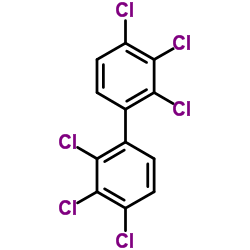Influence of polychlorinated biphenyls and turning preference on striatal dopamine metabolism.
Nikolay M Filipov, David A Lawrence, Richard F Seegal
文献索引:J. Toxicol. Environ. Health A 68(3) , 167-83, (2005)
全文:HTML全文
摘要
Male BALB/c mice, assessed for spontaneous nocturnal rotation that has been linked with functional differences in striatal dopamine (DA) content, were divided into right (R), left (L), and no turning preference (NP) groups. Both total turning activity and turning in the preferred direction were greatest in the R mice. To determine whether turning preference influences the response to exposure to an environmental toxicant known to reduce striatal DA function, striatal tissues from R, L, or NP mice were exposed to polychlorinated biphenyls (PCBs). In vitro exposure of striata from these mice to varying concentrations of PCBs for 4 h concentration-dependently decreased tissue DA content and increased the concentrations of DA and its metabolite 3,4-dihydroxyphenylacetic acid (DOPAC) in the media, a phenomenon already observed, although of smaller magnitude, with rat tissues. These effects were independent of the turning preference of the mice. Although the DA content initially did not differ among the striatal tissue from R, L, and NP mice, following 4 h of incubation in control medium (without PCBs), there was significantly greater DA content in striata from R mice in comparison to that from either L or NP mice. This difference was also apparent after 6 h of incubation, and it was not due to differences in DA turnover or cytotoxicity. Rather, the greater DA content in the striata of R mice was due to increased DA synthesis, since tyrosine hydroxylase (TH) activity was greater in striata from R mice than in striata from either L or NP mice. These differences in striatal DA synthesis, if present in vivo, may explain the observed greater nocturnal turning activity of the R mice. Additionally, the in vitro analyses suggest that striata from R mice have differential responses to stress compared with striata from L or NP mice. With regard to the effects of PCBs, however, it appears that (1) striata derived from mice with different turning preference are equally sensitive to this dopaminergic toxicant and (2) mice appear more sensitive to PCBs than rats.
相关化合物
| 结构式 | 名称/CAS号 | 分子式 | 全部文献 |
|---|---|---|---|
 |
多氯联苯(Aroclor 1260)标准溶液
CAS:11096-82-5 |
C12H4Cl6 |
|
Extensive biodegradation of polychlorinated biphenyls in Aro...
2008-01-01 [Chemosphere 73(1) , 126-32, (2008)] |
|
Use of a polar ionic liquid as second column for the compreh...
2010-09-10 [J. Chromatogr. A. 1217(37) , 5859-67, (2010)] |
|
Transcriptome-wide gene expression in a rat model of attenti...
2011-12-01 [Am. J. Med. Genet. B. Neuropsychiatr. Genet. 156B(8) , 898-912, (2011)] |
|
Parallelism and dissociation in the actions of an Aroclor 12...
2003-12-15 [Toxicology 194(1-2) , 65-75, (2003)] |
|
Dermal absorption in rhesus monkeys of polychlorinated biphe...
2002-06-01 [Regul Toxicol Pharmacol 35(3) , 289-95, (2002)] |